Léon Joseph Florentin Bonnat (1833-1922) stands as a towering figure in 19th-century French art, a painter whose career bridged the academic traditions of the past with the burgeoning currents of modernism. Renowned primarily for his powerful and psychologically astute portraits, Bonnat also made significant contributions as a history painter, an influential educator, and an avid art collector. His style, deeply rooted in the Spanish Golden Age and Italian Renaissance masters, combined with a meticulous realism, earned him widespread acclaim and a lasting legacy in the annals of art history. This exploration delves into the multifaceted career of Bonnat, examining his artistic development, his signature style, his pivotal role as a teacher, his interactions with contemporaries, and the enduring impact of his work.
Early Life and Artistic Formation in Spain and Paris
Born on June 20, 1833, in Bayonne, a town in the French Basque Country close to the Spanish border, Léon Bonnat's early life was profoundly shaped by Iberian culture. His family moved to Madrid in 1846 when he was a boy, as his father established a bookshop there. This relocation proved serendipitous for the young Bonnat's artistic inclinations. In Madrid, he received his foundational art education, studying under the tutelage of José de Madrazo y Agudo and, more significantly, his son, Federico de Madrazo y Kuntz. The Madrazos were central figures in Spanish academic art, and Federico, in particular, was a celebrated portraitist.
Under Federico de Madrazo, Bonnat was immersed in the rich artistic heritage of Spain. He spent countless hours in the Prado Museum, copying the works of Spanish Golden Age masters such as Diego Velázquez, Jusepe de Ribera, Francisco de Zurbarán, and Francisco Goya. The profound realism, dramatic use of chiaroscuro (strong contrasts between light and dark), and the dignified portrayal of subjects characteristic of these artists left an indelible mark on Bonnat's developing style. The somber palettes and textural richness of Spanish painting resonated deeply with him, providing a counterpoint to the often more polished and idealized French academic tradition he would later encounter.
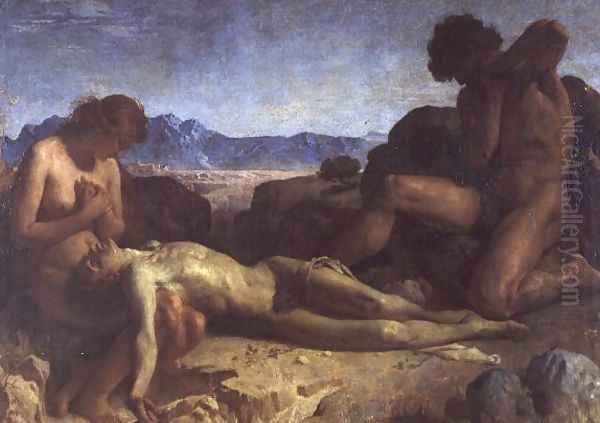
The death of Bonnat's father in 1853 prompted his return to Paris to continue his artistic studies. Armed with a strong foundation from his Spanish training, he entered the prestigious École des Beaux-Arts. There, he studied in the atelier of Léon Cogniet, a respected historical and portrait painter. Cogniet's studio was known for its rigorous academic training, emphasizing drawing, composition, and the study of the old masters. Bonnat also briefly studied with Paul Delaroche, another prominent academic painter, before Delaroche closed his teaching studio.
During his time in Paris, Bonnat diligently honed his skills, absorbing the tenets of French academicism while retaining the robust realism he had imbibed in Spain. He competed for the coveted Prix de Rome, a scholarship that allowed promising artists to study in Rome. Although he won second prize in 1857, which did not include the full scholarship, he was able to travel to Italy thanks to support from his hometown of Bayonne and other patrons. His time in Rome, from 1858 to 1861, further broadened his artistic horizons, exposing him to the masterpieces of the Italian Renaissance, particularly the works of Raphael, Titian, and Michelangelo, as well as the powerful naturalism of Caravaggio.
The Ascendance of a Portraitist
Upon his return to Paris, Bonnat began to establish his reputation. His Salon debut in 1857 with paintings like The Good Samaritan and Adam and Eve Finding the Body of Abel showcased his skill in religious and historical subjects, demonstrating the influence of his Spanish and Italian studies. These early works were noted for their dramatic intensity and solid draftsmanship. Works like St Vincent de Paul Taking the Place of a Galley Slave (1866, Church of Saint-Nicolas des Champs, Paris) further cemented his reputation in this genre.
However, it was in the field of portraiture that Léon Bonnat would achieve his most enduring fame. He possessed an uncanny ability to capture not only a sitter's physical likeness but also their personality and social standing. His portraits are characterized by their sober dignity, strong modeling, often dark backgrounds that make the figure stand out, and an almost sculptural sense of form. He eschewed flattery for a direct, often unsparing, depiction of his subjects, which lent his portraits a remarkable sense of presence and psychological depth.
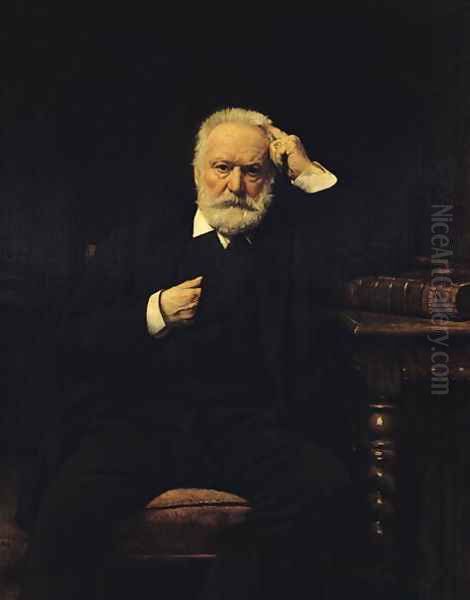
Throughout the 1860s and beyond, Bonnat became one of the most sought-after portrait painters in France and internationally. He painted a veritable "who's who" of the Third Republic, including presidents, politicians, writers, artists, and prominent members of society. Among his most celebrated portraits are those of Adolphe Thiers (1877, Musée d'Orsay, Paris), the first president of the Third Republic, depicted with a stern, intellectual gravity. His portrait of Victor Hugo (1879, Musée National du Château de Versailles) captures the literary giant in his later years with profound insight.
Other notable sitters included Léon Gambetta, Louis Pasteur, Alexandre Dumas fils, Jean-Auguste-Dominique Ingres (a posthumous portrait based on photographs and other likenesses), and fellow artists like Jean-Léon Gérôme. His portrait of Joseph-Nicolas Robert-Fleury (1865), a fellow painter and later director of the École des Beaux-Arts, is a fine example of his ability to convey a colleague's intellectual and artistic persona. Bonnat's portraits were admired for their technical mastery, their powerful characterization, and their often-somber, Velázquez-inspired palettes. He typically focused on the face and hands, rendering them with meticulous detail, while treating the costume and background with broader, more suggestive strokes.
Religious, Historical, and Genre Paintings
While portraiture became his mainstay, Bonnat continued to produce significant religious and historical paintings throughout his career. His early religious works, such as Christ on the Cross (1874, Petit Palais, Paris), are marked by a stark realism and emotional intensity that recall the Spanish masters, particularly Ribera. This painting, with its dramatic lighting and unflinching depiction of Christ's suffering, was a powerful statement of faith and artistic conviction.
His Martyrdom of Saint Denis (1874-1888, Panthéon, Paris) is a large-scale historical work commissioned for the Panthéon, a building dedicated to the great figures of French history. This ambitious composition demonstrates his skill in handling complex multi-figure scenes and his commitment to historical accuracy. The painting depicts the beheading of Saint Denis, the patron saint of Paris, with a dramatic force and a rich, somewhat dark, palette.

A significant journey in 1868-1869 took Bonnat to Egypt and the Holy Land, including Jerusalem. This trip had a profound impact on his work, particularly his approach to religious subjects and his interest in Orientalist themes, which were popular at the time. He sought a greater sense of authenticity in his depictions of biblical scenes, informed by his firsthand experience of the landscapes and peoples of the Middle East. This journey influenced works like An Arab Ploughing with Camels in Upper Egypt and various genre scenes depicting local life. These works often featured a brighter palette and a keen observation of ethnographic detail, distinguishing them from his more formal portraits and European historical scenes.
One anecdote relates that an inspirational dream led to the creation of a particular painting, highlighting the sometimes-mystical wellsprings of his artistic creativity. Another story tells of an unfinished portrait, a poignant reminder of the human element in art, where the work was halted by the sudden death of the sitter. These glimpses into his process reveal an artist deeply engaged with both the spiritual and the tangible aspects of his craft.
Artistic Style and Enduring Influences
Léon Bonnat's artistic style is often described as Academic Realism. It was academic in its rigorous draftsmanship, its carefully constructed compositions, and its respect for the traditions of the Old Masters. It was realist in its commitment to depicting the world and its inhabitants with truthfulness and a lack of idealization, particularly in his portraits.
The most profound and enduring influence on Bonnat's art was undoubtedly that of Spanish painting. The gravity, realism, and dramatic lighting of Velázquez and Ribera are consistently echoed in his work. He shared Velázquez's ability to convey the dignity of the sitter and Ribera's mastery of chiaroscuro and tactile representation of flesh. The influence of Goya can also be seen in the psychological penetration of some of his portraits.
From the Italian Renaissance, Bonnat absorbed lessons in composition, anatomical precision, and the monumental treatment of the human figure. Artists like Titian, with his rich color and powerful portraiture, and Raphael, with his harmonious compositions, were important touchstones. The robust naturalism of Caravaggio also resonated with Bonnat's own inclinations.
In terms of French tradition, while he operated within the academic system, his realism set him somewhat apart from the more polished and idealized style of contemporaries like William-Adolphe Bouguereau or Alexandre Cabanel. Bonnat's work had a grittier, more direct quality. He employed a solid, often impastoed, technique, building up forms with visible brushstrokes that contributed to the textural richness of his surfaces. His color palettes were often restrained, dominated by blacks, browns, and ochres, enlivened by carefully placed accents of color, especially in the flesh tones and details of costume.
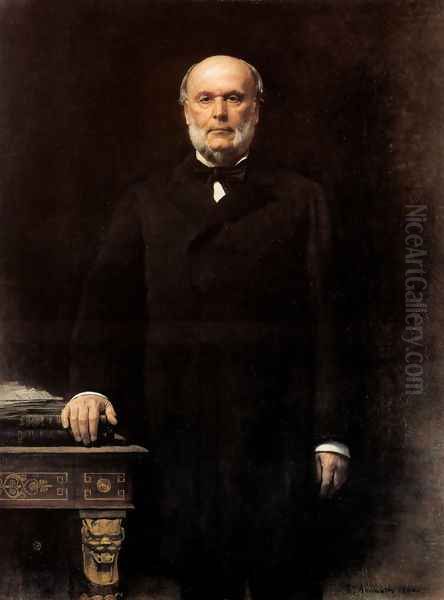
He was a master of capturing the play of light on surfaces, using it to model form and create dramatic emphasis. This careful observation of light and shadow, combined with his strong drawing, gave his figures a tangible, three-dimensional presence. While not an Impressionist, he was aware of the changing artistic landscape and, in some later works, one can see a slightly looser brushwork and a greater attention to the effects of light, though he never abandoned his commitment to solid form and realistic representation.
Bonnat the Educator: Shaping a Generation of Artists
Beyond his achievements as a painter, Léon Bonnat was one of the most influential art educators of his time. He began teaching at the École des Beaux-Arts in 1882, and his atelier became one of the most popular and respected at the institution. In 1905, he was appointed Director of the École des Beaux-Arts, a testament to his standing within the French art establishment.
Bonnat's teaching philosophy emphasized rigorous training in drawing as the foundation of all art. He encouraged his students to study the Old Masters, particularly those of the Spanish and Italian schools, and to develop a strong understanding of anatomy and composition. However, he also fostered a degree of independence, urging students to find their own artistic voices. He was known for his exacting standards but also for his supportive and encouraging demeanor towards talented pupils. His teaching method aimed for a balance between meticulous attention to detail and the achievement of a powerful overall effect.
A remarkable number of artists who would go on to achieve international fame passed through Bonnat's studio. Perhaps his most famous American student was Thomas Eakins, a pivotal figure in American Realism. Eakins's own commitment to unsparing realism and anatomical accuracy was undoubtedly reinforced by his studies with Bonnat. Another prominent American, John Singer Sargent, also studied with Bonnat (though Carolus-Duran is more famously associated with Sargent's training, Bonnat's influence was also part of his Parisian education). Sargent's bravura brushwork and psychological acuity in portraiture share some affinities with Bonnat's approach.
Other notable students included the French Impressionist Gustave Caillebotte, who, despite his association with the avant-garde, received a solid academic grounding. Henri de Toulouse-Lautrec, renowned for his depictions of Parisian nightlife, also spent time in Bonnat's atelier, absorbing lessons in draftsmanship that would underpin his distinctive graphic style. Even artists who would later break radically with academic tradition, such as Georges Braque (a co-founder of Cubism) and potentially Paul Gauguin (though his primary teacher was Pissarro), had some exposure to Bonnat's teaching or the academic environment he represented.
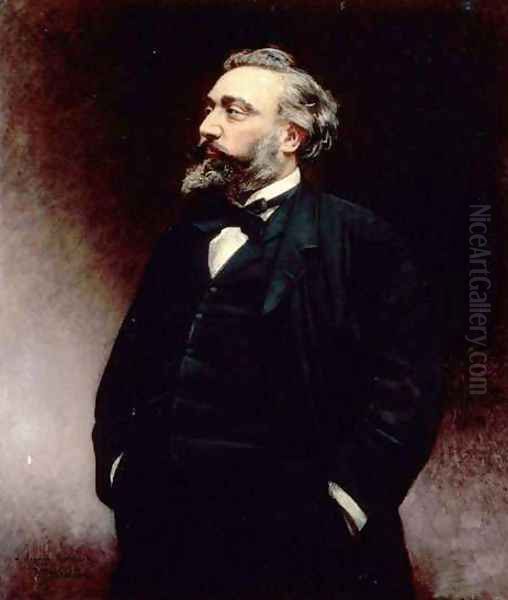
The list of his pupils is extensive and international, including artists like Alfred Philippe Roll, a successful French academic painter; Eugène Carrière, known for his misty, Symbolist-influenced portraits; Henri Rivière, a printmaker and designer; and the Canadian painter Robert Harris. This diverse array of students demonstrates the breadth of Bonnat's influence and the respect he commanded as a teacher, even among those who would ultimately pursue very different artistic paths.
Interactions with Contemporaries and Position in the Art World
Léon Bonnat occupied a prominent, if somewhat conservative, position within the vibrant and often contentious Parisian art world of the late 19th century. As a successful Salon painter and later a professor and director at the École des Beaux-Arts, he was a pillar of the art establishment. However, his artistic roots in Spanish realism gave his work a distinct character that set it apart from some of his more conventionally academic peers.
He maintained relationships with a variety of artists, including those outside the strict academic fold. He was reportedly close to independent artists like Edgar Degas, who, despite his Impressionist affiliations, greatly admired the Old Masters and valued strong drawing. Bonnat and Degas, along with Gustave Moreau and Félix Bracquemond, are said to have met at the Villa Medici in Rome during their formative years, participating in life drawing sessions that were less rigidly structured than typical academic classes.
Bonnat was known to support fellow artists. For instance, he is said to have supported Gustave Courbet, the standard-bearer of Realism, in certain contexts, and defended Edgar Degas's submissions to the Salon. This suggests a degree of open-mindedness, even if his own artistic practice remained largely within academic-realist boundaries. He also had close ties with other established academic painters like Jules-Élie Delaunay, Émile Lévy, and Henri Lefebvre, with whom he frequently exhibited at the Salon.
His relationship with the burgeoning Impressionist movement was complex. While his own style was antithetical to the Impressionists' emphasis on capturing fleeting moments, optical effects of light, and subjective perception, he was not entirely dismissive of new trends. His friendship with Degas is indicative of this. However, as a leading figure of the establishment, his official role often placed him in opposition to the more radical avant-garde movements that were challenging the dominance of the Salon and the École des Beaux-Arts. Painters like Claude Monet, Pierre-Auguste Renoir, and Camille Pissarro were forging a new path that diverged sharply from Bonnat's principles.
The Collector and Philanthropist: The Musée Bonnat-Helleu

Léon Bonnat was not only a creator of art but also a passionate and discerning collector. Over his long career, he amassed an extraordinary collection of paintings, drawings, sculptures, and objets d'art. His collection was particularly strong in Old Master drawings, including works by Michelangelo, Leonardo da Vinci, Raphael, Rembrandt, Rubens, and Dürer. He also collected paintings by his beloved Spanish masters, including El Greco, Goya, Ribera, and Murillo, as well as works by Italian and Flemish artists.
His deep affection for his hometown of Bayonne led him to bequeath his magnificent collection to the city. This generous act resulted in the creation of the Musée Bonnat. Later, the museum also received a significant donation from the family of the artist Paul Helleu, and it is now known as the Musée Bonnat-Helleu. The museum stands as a testament to Bonnat's connoisseurship and his desire to share his passion for art with the public. It remains one of France's most important provincial museums, offering a rich survey of European art history, anchored by the personal taste of one of its most distinguished artistic sons. His collection also included Egyptian and Greco-Roman antiquities, reflecting his broad cultural interests.
Later Years and Legacy
Léon Bonnat continued to paint and teach into his old age, remaining a respected figure in the art world. He received numerous honors throughout his career, including the Grand Cross of the Legion of Honour, one of France's highest distinctions. He was elected to the Académie des Beaux-Arts in 1881. His influence extended beyond France, as evidenced by the many international students who sought his instruction and the commissions he received from abroad.
He passed away on September 8, 1922, in Monchy-Saint-Éloi, at the age of 89. By the time of his death, the art world had undergone radical transformations. Cubism, Fauvism, Surrealism, and various forms of abstraction had supplanted academic realism as the dominant avant-garde styles. Consequently, Bonnat's reputation, like that of many academic painters of his generation, experienced a period of decline in the mid-20th century as critical attention shifted towards modernism.
However, in more recent decades, there has been a reassessment of 19th-century academic art, and Léon Bonnat's contributions are once again being recognized. Art historians now appreciate the technical skill, psychological depth, and historical significance of his work. His portraits, in particular, are valued as powerful documents of an era and as masterful examples of the art of portraiture. His role as an influential teacher who shaped a generation of artists is also acknowledged.
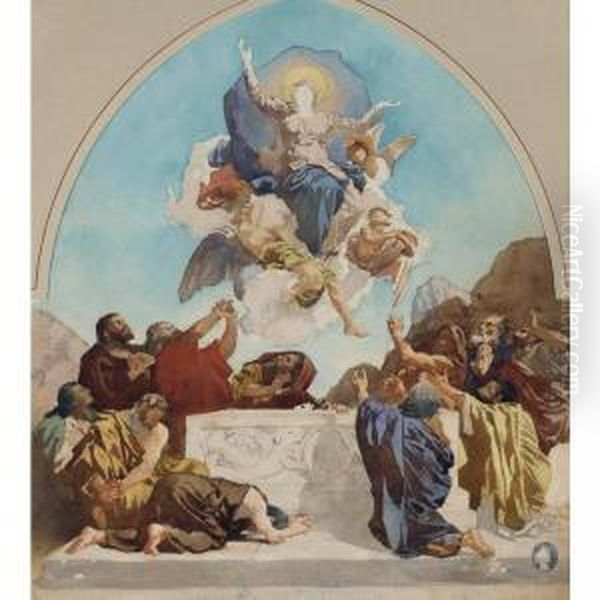
His legacy endures through his paintings, which are held in major museums around the world, including the Musée d'Orsay, the Petit Palais, and the Panthéon in Paris, as well as the Metropolitan Museum of Art in New York and the National Gallery of Art in Washington D.C. And, of course, his most personal legacy is the Musée Bonnat-Helleu in Bayonne, a lasting gift to his city and to art lovers everywhere.
Conclusion: An Enduring Figure in Art History
Léon Bonnat was a complex and significant figure in 19th-century art. He successfully navigated the demands of the academic system while forging a distinctive style rooted in his deep admiration for Spanish and Italian masters. As a portraitist, he created an invaluable gallery of the leading personalities of his time, capturing them with an unflinching realism and profound psychological insight. As an educator, he transmitted his knowledge and passion to a multitude of students, many of whom went on to make their own important contributions to art history.
While his adherence to realism and academic principles may have seemed conservative in an age of revolutionary artistic change, Bonnat's commitment to craftsmanship, his understanding of human character, and his ability to create images of enduring power secure his place as a master. His work serves as a vital link between the great traditions of European painting and the art of the modern era, and his influence, both direct and indirect, continues to resonate. Léon Bonnat remains a testament to the enduring power of skill, observation, and a deep connection to the artistic heritage of the past.